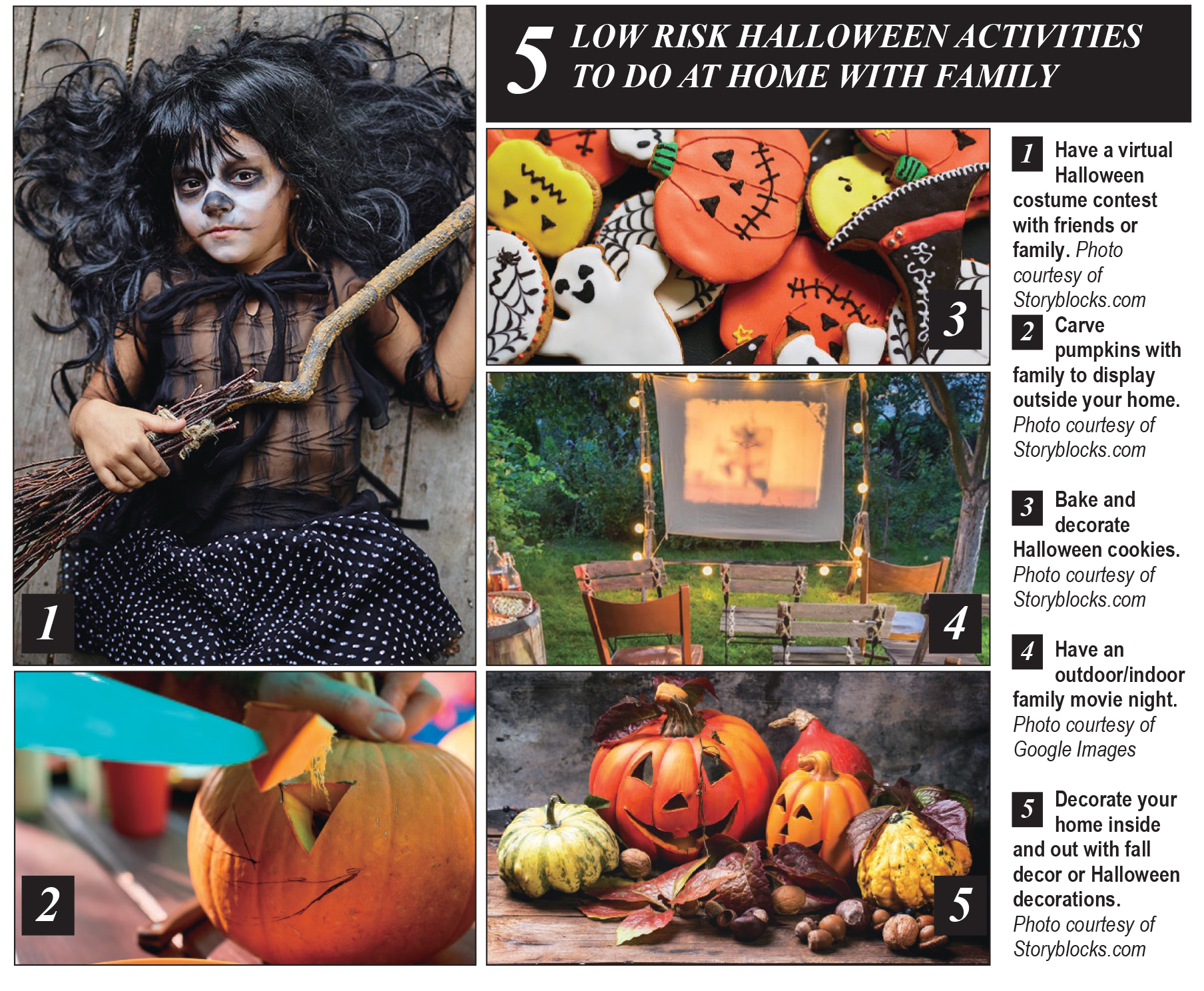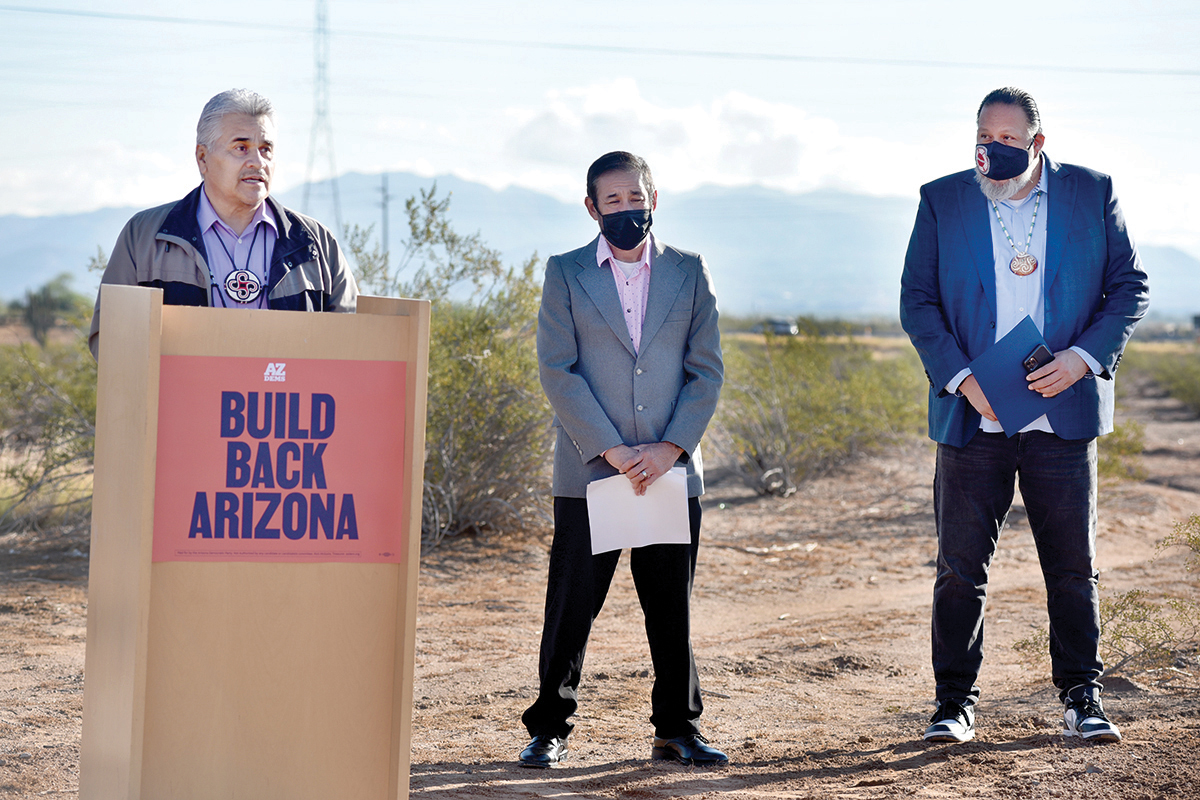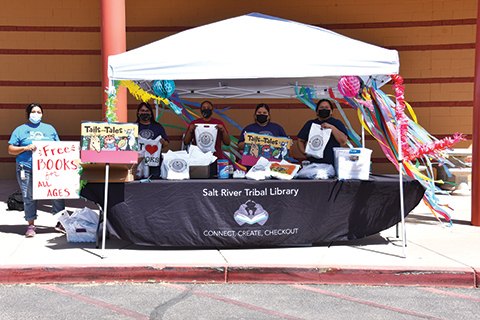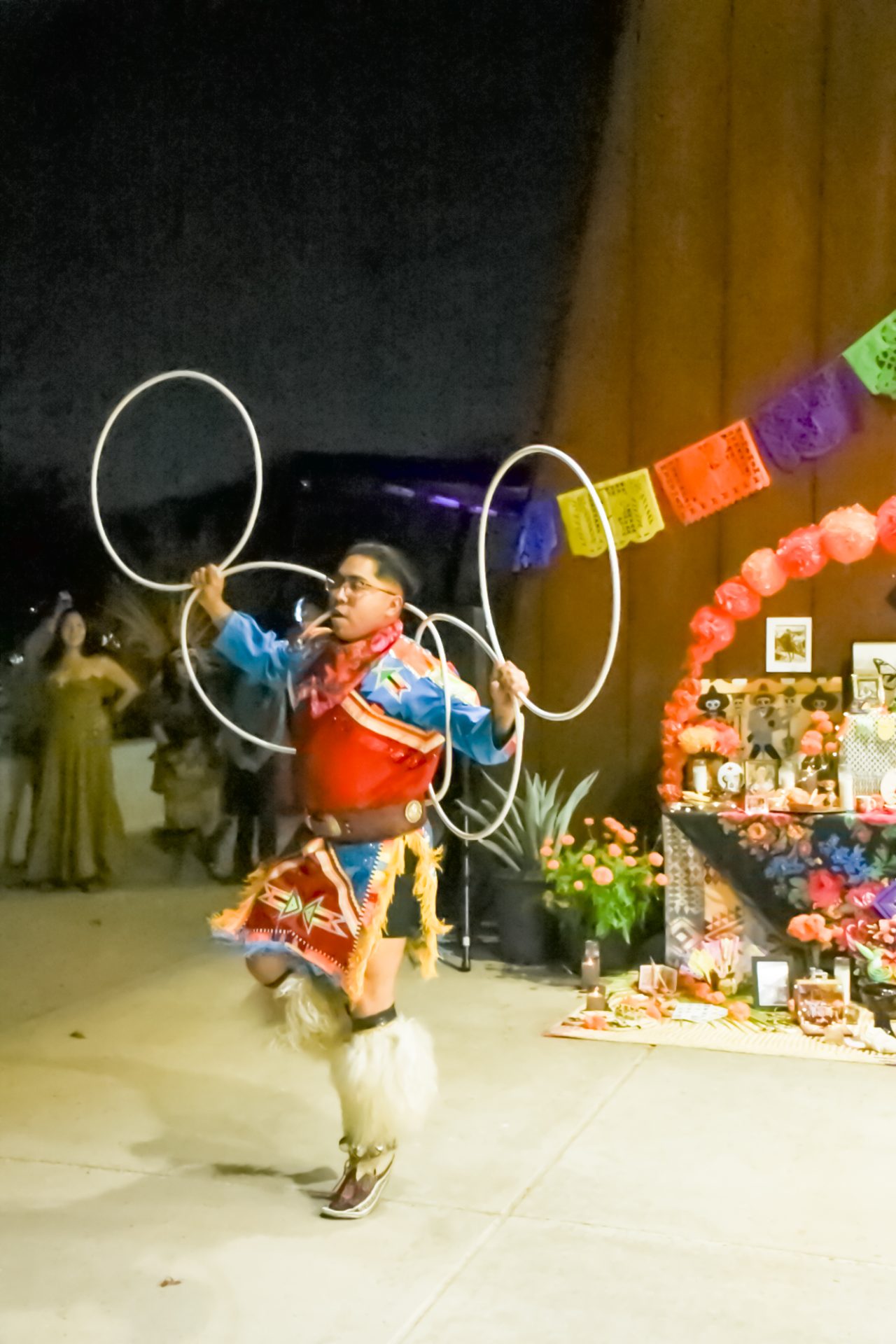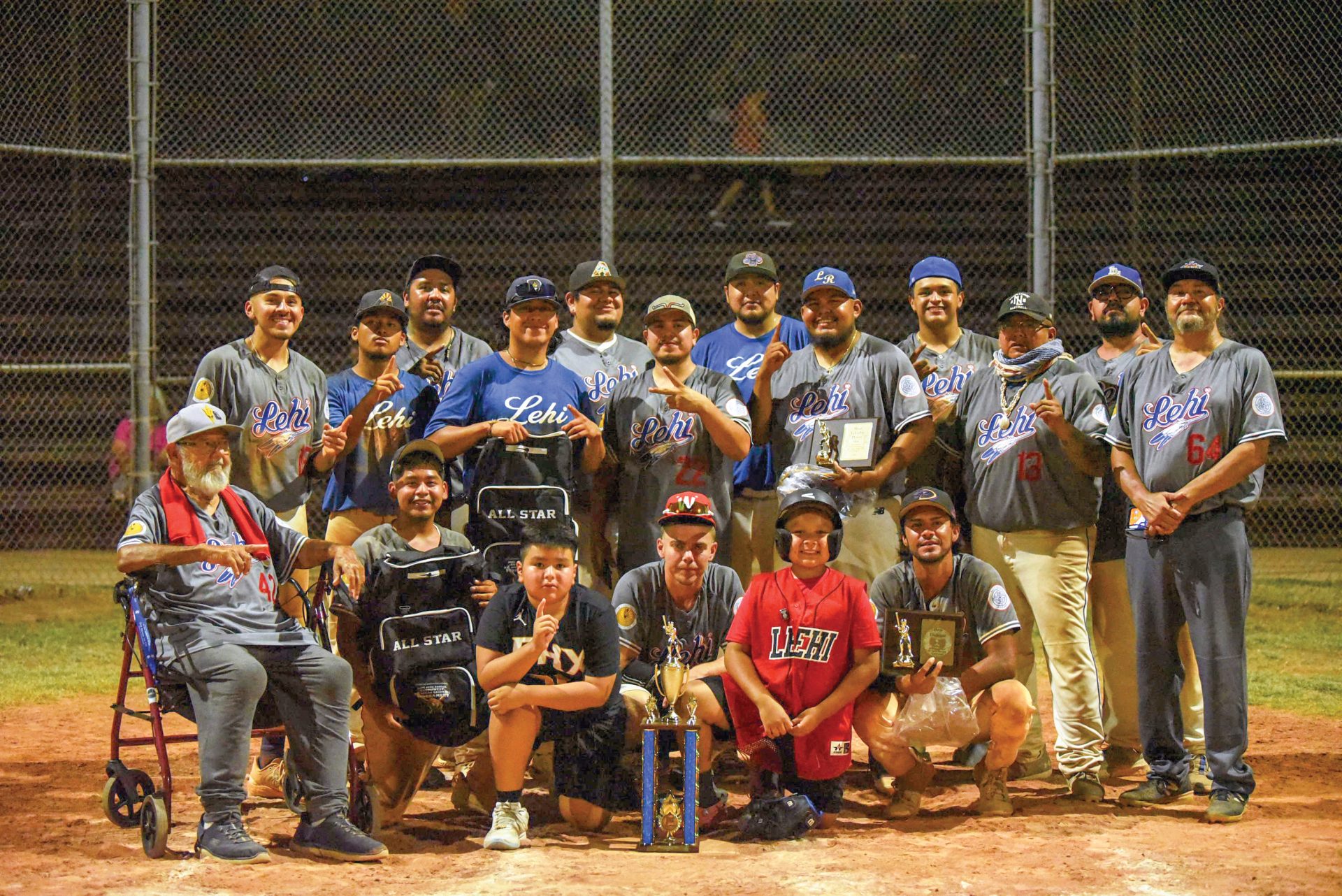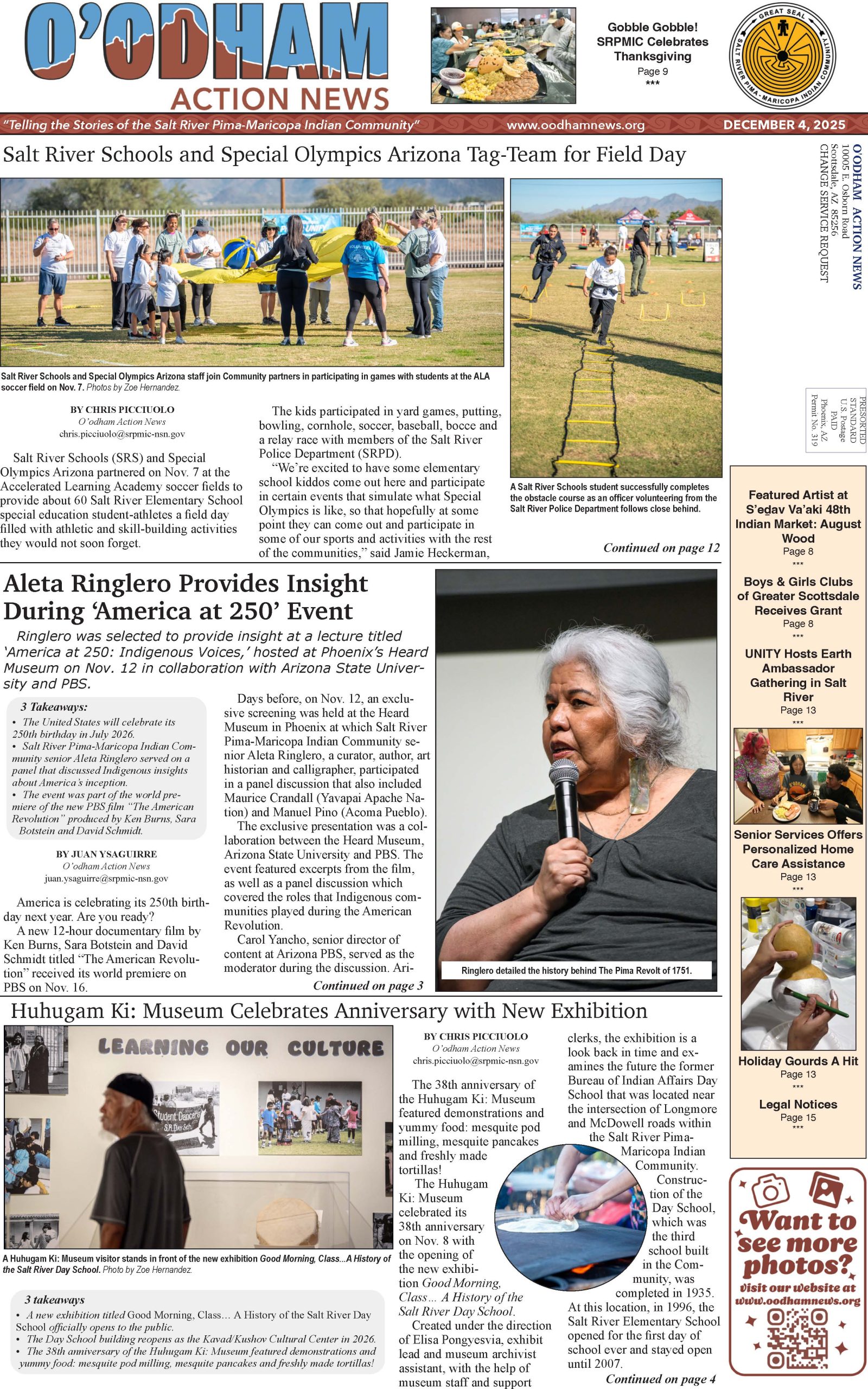VIEWS: 3739
October 14, 2020How to Prevent the Spread of COVID-19 During the Holiday Season
As the fall and winter holidays are now around the corner, the Salt River Pima-Maricopa Indian Community members are wondering what their Halloween, Thanksgiving, Christmas and other holiday celebrations will look like this year. Will the SRPMIC have new guidelines set for these celebrations, or will we continue to abide by the Community’s Curfew to Reduce the Spread of COVID-19?
The current guidelines for Community members and residents stem from the Emergency Declaration “Curfew to Reduce the Spread of COVID-19,” which has been in effect since July. The declaration states:
• The curfew is in effect from 8 p.m. to 5 a.m.; during that time, all persons should be at their place of residence, with exceptions including police, fire and medical personnel.
• Residents are required to stop gatherings among non-household members.
• Community members are to stay home except for essential services, limit gatherings to 10 people or fewer, wear face coverings and obey the curfew.
• SRPMIC Health and Human Services (HHS) can issue directives for persons to isolate pending testing results or quarantine if testing positive. HHS directives are enforceable; if violated, under section 1-503 of the SRPMIC Code of Ordinances, there is a civil offense fine of $250, with second and subsequent fines of $500.
• The SRPMIC local emergency directives will be enforced by (1) education, (2) opportunity to comply, and finally (3) action taken under Section 1-503 of the SRPMIC Code of Ordinances. Civil offense fine of $250, second and subsequent fines of $500.
New guidelines from the SRPMIC Council on Halloween celebrations were approved on Wednesday, October 7, 2020. The COVID-19 Halloween Directive imposes the following:
• No trick-or-treating or haunted houses for Halloween 2020.
• No activity that brings people of different households together even if activities are held outdoors.
• All Halloween 2020 activities are restricted to 10 people or less
In addition, the following protective measures are recommended to be reinforced:
• Wear a face covering
• Wash hands regularly with soap and water or clean with alcohol-based hand rub
• Maintain at least six feet distance from persons not of your household
• Avoid touching your face
• Cover your mouth and nose when coughing or sneezing
• Stay home if you feel sick
You can read more on the Fifth Directive on page 13.
This year the Fall Festival a SRPMIC Council sponsored event will go virtual, due to the current conditions the Fall Festival will be cancelled. But the Community Relations Office Events Division has a plan to keep the SRPMIC members in the Halloween spirit with virtual events contests. The contest includes a costume contest, best decorated fall festival house and a pumpkin carving contest. Each division will have its own categories and winners of each of those categories will win up to $100 gift card (See Fall Festival flier for more details shown below).
“This contest is family friendly; contestants can submit a photo or video of their costume, decorated house and/or carved pumpkin,” said Community Relations Office Events Manager Yvonne Schaaf. “The deadline for submissions is on October 30, 2020; the events staff will be working over that weekend to put together a video of the contest winners and will be posted on November 1, 2020 via the SRPMIC social media pages.”
The Events Division is asking that everyone who enters the contest make sure they follow the rules and guidelines, especially when they are submitting their information. Please make sure you include full names, email addresses, contact numbers and mailing information, because if you win a prize, they (Events Staff) would like to make sure you get it.
***
CDC Guidance – Virus spread risk at holiday celebrations
Celebrating virtually or with members of your own household pose low risk for spread. In-person gatherings pose varying levels of risk. Event organizers and attendees should consider the risk of virus spread based on event size and use of mitigation strategies, as outlined in the Considerations for Events and Gatherings. There are several factors that contribute to the risk of getting infected or infecting others with the virus that causes COVID-19 at a holiday celebration. In combination, these factors will create various amounts of risk, so it is important to consider them individually and together:
Community levels of COVID-19 – Higher levels of COVID-19 cases and community spread in the gathering location, as well as where attendees are coming from, increase the risk of infection and spread among attendees. Family and friends should consider the number and rate of COVID-19 cases in their community and in the community where they plan to celebrate when considering whether to host or attend a holiday celebration. Information on the number of cases in an area can be found on the area’s health department website.
The location of the gathering – Indoor gatherings generally pose more risk than outdoor gatherings. Indoor gatherings with poor ventilation pose more risk than those with good ventilation, such as those with open windows or doors.
The duration of the gathering – Gatherings that last longer pose more risk than shorter gatherings.
The number of people at the gathering – Gatherings with more people pose more risk than gatherings with fewer people. CDC does not have a limit or recommend a specific number of attendees for gatherings. The size of a holiday gathering should be determined based on the ability to reduce or limit contact between attendees, the risk of spread between attendees, and state, local, territorial, or tribal health and safety laws, rules, and regulations.
The locations attendees are traveling from – Gatherings with attendees who are traveling from different places pose a higher risk than gatherings with attendees who live in the same area. Higher levels of COVID-19 cases and community spread in the gathering location, or where attendees are coming from, increase the risk of infection and spread among attendees.
The behaviors of attendees prior to the gathering – Gatherings with attendees who are not adhering to social distancing (staying at least 6 feet apart), mask wearing, hand washing, and other prevention behaviors pose more risk than gatherings with attendees who are engaging in these preventative behaviors.
The behaviors of attendees during the gathering – Gatherings with more preventive measures, such as mask wearing, social distancing, and hand washing, in place pose less risk than gatherings where fewer or no preventive measures are being implemented.
People who should not attend in-person holiday celebrations
People with or exposed to COVID-19
* Do not host or participate in any in-person festivities, if you or anyone in your household has been diagnosed with COVID-19 and has not met the criteria for when it is safe to be around others
* Has symptoms of COVID-19
* Is waiting for COVID-19 viral test results
* May have been exposed to someone with COVID-19 in the last 14 days
* Is at increased risk of severe illness from COVID-19
People at increased risk for severe illness
* If you are at increased risk of severe illness from COVID-19, or live or work with someone at increased risk of severe illness, you should
* Avoid in-person gatherings with people who do not live in your household.
* Avoid larger gatherings and consider attending activities that pose lower risk (as described throughout this page) if you decide to attend an in-person gathering with people who do not live in your household.

